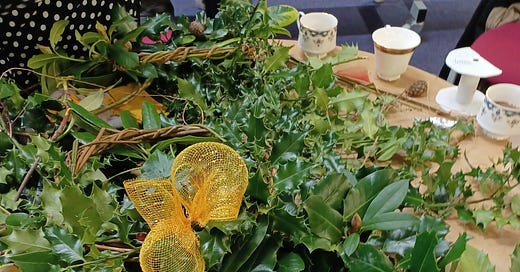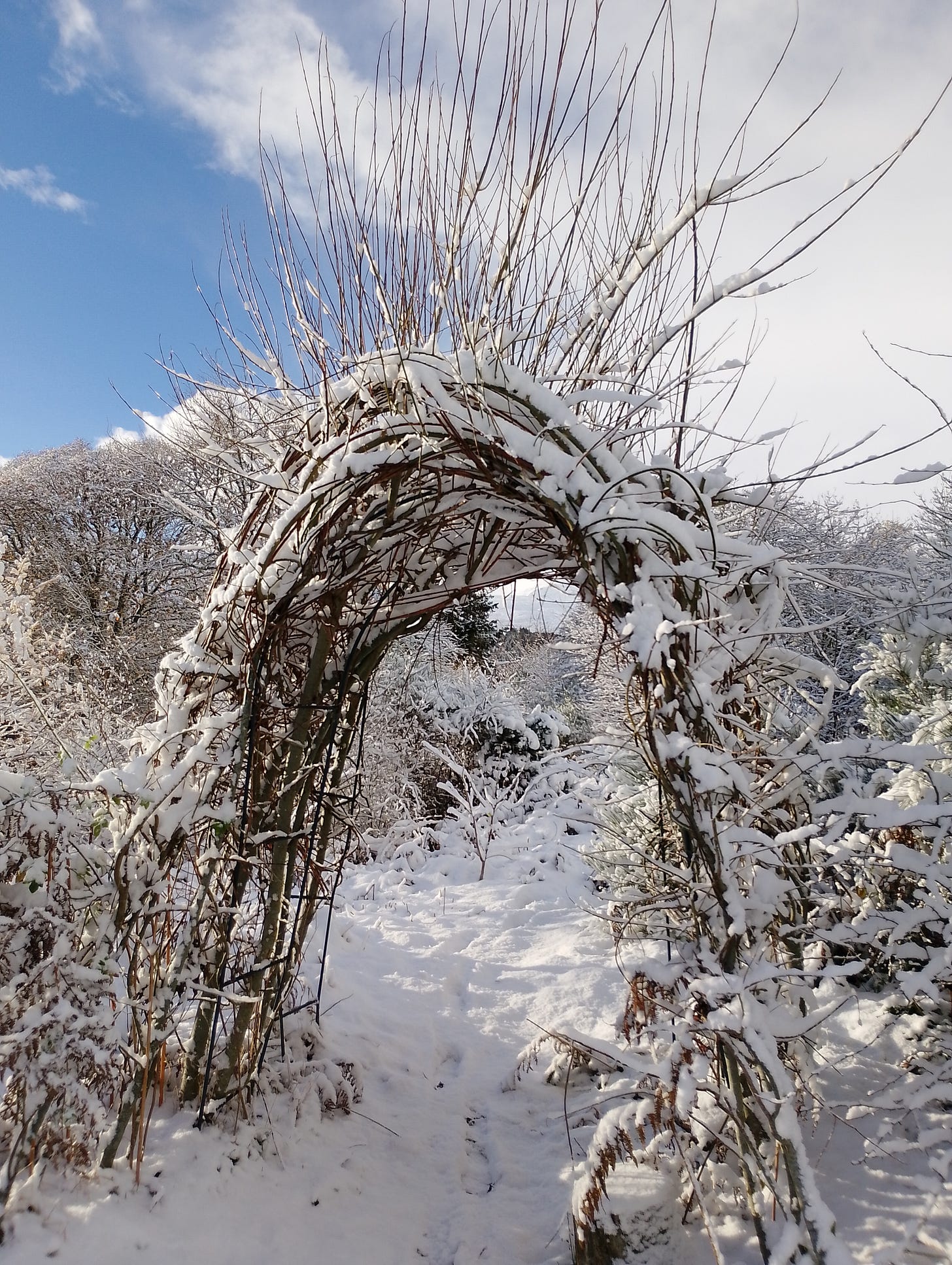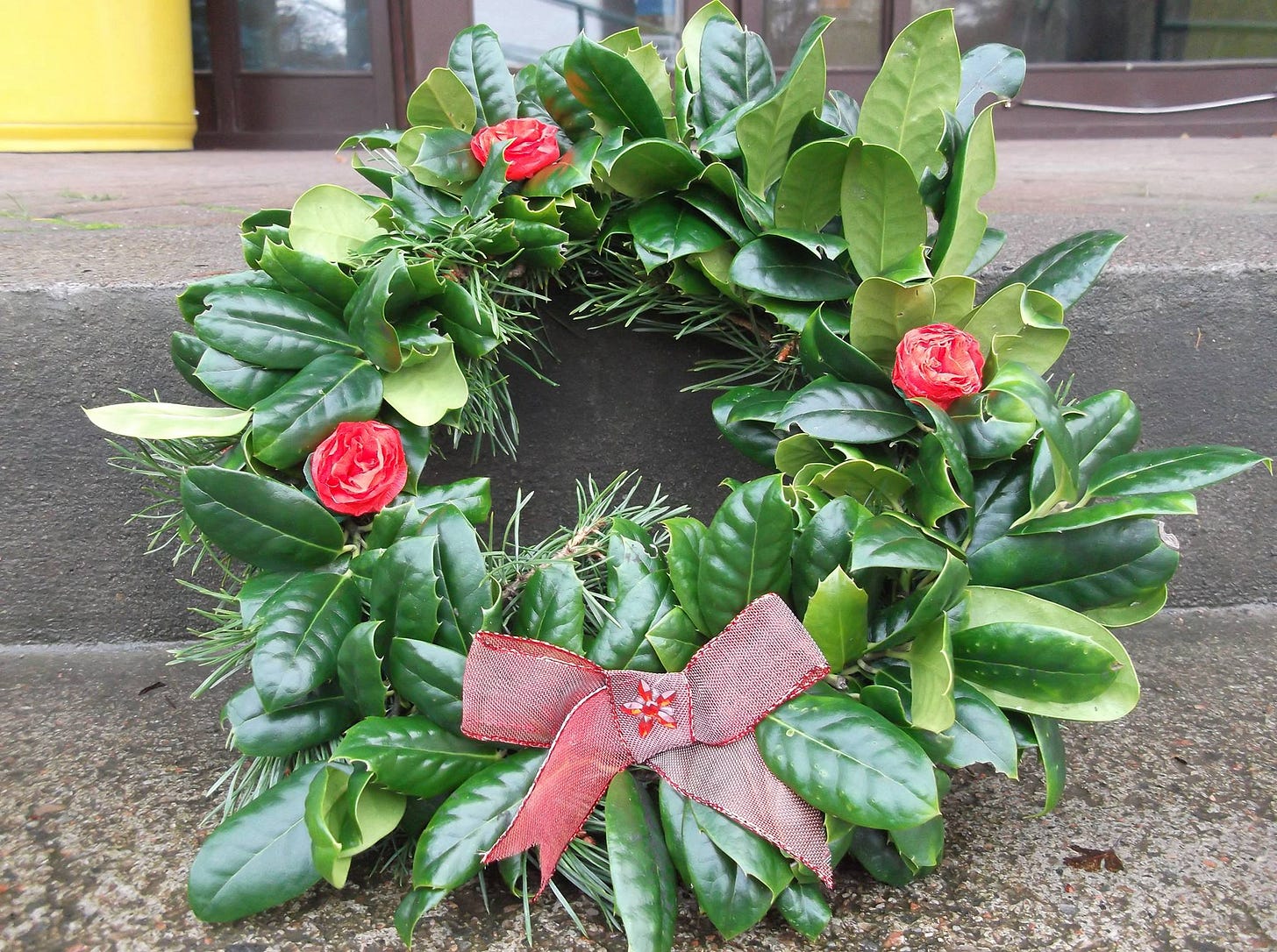It's that time of the year again, the time when my dad worked out in the shed until late into the evening making holly wreaths and grave pots. The season, when as children we’d go to help cut holly at a nearby hospital before loading the prickly branches into the van to take home. The holly we cut was that that needed to be pruned - and while the hospital got their trees pruned, we got the holly!
This was the season where watching TV involved wiring pinecones and other objects ready to be added to the holly wreaths. In those days people knew less about the environment than today and the wreaths were made by tying straw to a metal ring and covering it with sphagnum moss! Knowing better now I would never dream of doing this today but over 30 years ago I didn't really understand that environmental impact.
I learned a lot from these early crafting experiences and today I still make holly wreaths as well as teaching others how to do the same. Today I no longer teach using metal rings, straw and sphagnum moss, instead we use sustainable willow withies which are growing and can be cut locally.
A few weeks before the wreath workshop, I cut the long, straight stems of this year's growth ready to be used, and place dried Willow from previous events into soaking bags to allow them to become pliable again. Any bits that aren't suitable to be used in the wreaths I plant in my garden and any that take will help to supply future workshops, as well as giving my hens somewhere to shelter and sit.
If you fancy having a go at making your own holly wreath, take a stem of willow about 6 feet long and bend it into a circle crossing the ends over. Take one of the ends and weave it around the circle leaving the other end as a tail at this point. When you reach the end of the first stem add in a second stem again leaving a tail and weave this around the circle. Keep doing this until you have woven in at least six stems. The more stems you weave in, the stronger your wreath will be.
Once you have finished weaving in stems cut the tails off flush with the surrounding willow to leave a neat ring.
Now it is time to decorate your wreath. I like start by covering my wreath with conifers before adding the holly. Here you have a few options. Firstly, if your ring is loosely woven you can push vegetation into the ring directly. If it is tightly woven, then you may have to bind the vegetation too the willow ring. To do this either use florist’s wire (but remember this will need to be removed before discarding the wreath’s vegetation), or by using compostable natural cordage such as jute or even willow or bramble string.
Start by taking your first piece a vegetation and tie it to your wreath, wrap the cordage around on one direction hiding leaves, add a second piece and so on. Keep binding until you have covered the entire willow ring.
Now you can add a different vegetation, it is here that I like to add holly. Continue as before binding it to the ring in order to cover the entire circle or push smaller pieces through the cordage and previous vegetation.
Once the wreath looks how do you want it, it is time to add embellishments such as pine cones, berries, dried oranges and a ribbon. It helps to have added wire to your embellishments before hand - for ease of attachement, but do remember to remove the wire for reuse at the end of the season, so the materials can compost naturally.
You now have your own unique wreath to hang on your door. After Christmas you can remove all the vegetation to leave just the willow ring which you can store dry until next year ready to be redecorated with new vegetation.
Michelle Melville is High Life Highland’s Heritage Ranger, is passionately dedicated to preserving Scottish natural and cultural heritage. A skilled artisan, Michelle excels in a range of hand crafts from carving and weaving to needle felting. Her talent in these crafts forms a vital part of her role in engaging and inspiring communities to be inspired by their environment, and learn new skills and gain in confidence.










My mum used to make a wreath every Christmas; it was a family ritual to collect holly and evergreens, then decorate it together. You could see it through the glass of the front door, and it cast shadows on the hall carpet. We used a very unsustainable coat hanger (thanks, Blue Peter!) but it came out year after year, so perhaps it wasn't too bad.